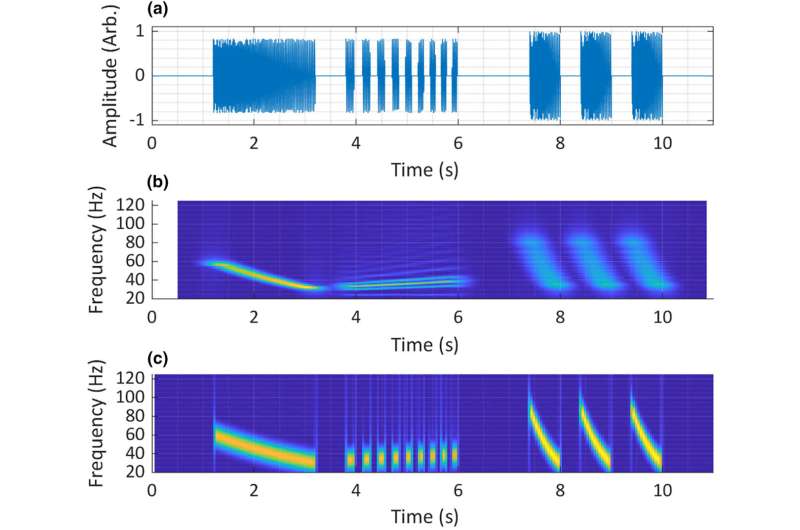This article has been reviewed according to Science X's editorial process and policies. Editors have highlighted the following attributes while ensuring the content's credibility:
fact-checked
peer-reviewed publication
trusted source
proofread
Scientists using new sound tech to save animals from extinction

Research, conducted by The University of Warwick and the University of New South Wales in Australia, analyzes animal sounds from endangered species including types of elephants, whales and birds.
It uses a new method adapted from tech used to analyze brain waves in neuroscience. The study is published in the journal Ecology and Evolution.
Analysis of animal sounds can be used to estimate their population size, to identify what animals live in a particular area, to understand their migration patterns, and to understand any negative impacts they may experience due to the increasing levels of noise created by human activity that are occurring in most of their habitats. Such insights are vital in developing environmental management and conservation strategies.
The new method was shown to be more accurate than the conventional methods for analysis of animal sounds. While testing this new method, called the Superlet transform, the study also revealed some previously unreported or disputed details in animal sounds:
- The Asian elephant call isn't just made up of continuous tones, but also contains sounds that are "pulsed," or comprised of regularly timed bursts of sound energy.
- Pulsing was also shown in the southern cassowary (a large bird similar to an emu) and American crocodile calls.
- New evidence was uncovered that helps to solve a debate around the characteristics of the Chagos pygmy blue whale's song.
These are not conclusive findings, as each one is based on just a single recording. To confirm them, more sounds will need to be analyzed. They illustrate, however, the power of this new method to clarify details that previously might have been ambiguous.
Lead Researcher Ben Jancovich, a Ph.D. candidate from The University of New South Wales, and visiting Ph.D. student at The University of Warwick's Mathematics Institute, said, "Our new study highlights that sometimes, the accepted tools that we've become comfortable with, may not actually be the best tools for the job."
"This is especially true in cross-disciplinary fields like bioacoustics, where the methods are highly technical, and require expertise in multiple fields."
"The new method we demonstrated offers increased accuracy and requires less expertise to use, so it should prove to be a hugely valuable tool for animal sound researchers that don't have an engineering background."
Current methods (including the "Short-Time Fourier Transform," STFT) have difficulties in accurately revealing both the rhythms and pitch of sounds at the same time.
These limitations are more pronounced at lower frequencies, affecting the analysis of sounds like those made by blue whales—gentle giants of the sea, sadly listed as an endangered species.
The new technology will be available for people to use for free, via a simple-to-use app, making it easy for researchers from different fields to use, without needing extensive knowledge of audio signal analysis.
More information: Benjamin A. Jancovich et al, BASSA: New software tool reveals hidden details in visualisation of low‐frequency animal sounds, Ecology and Evolution (2024). DOI: 10.1002/ece3.11636
Journal information: Ecology and Evolution
Provided by University of Warwick



















